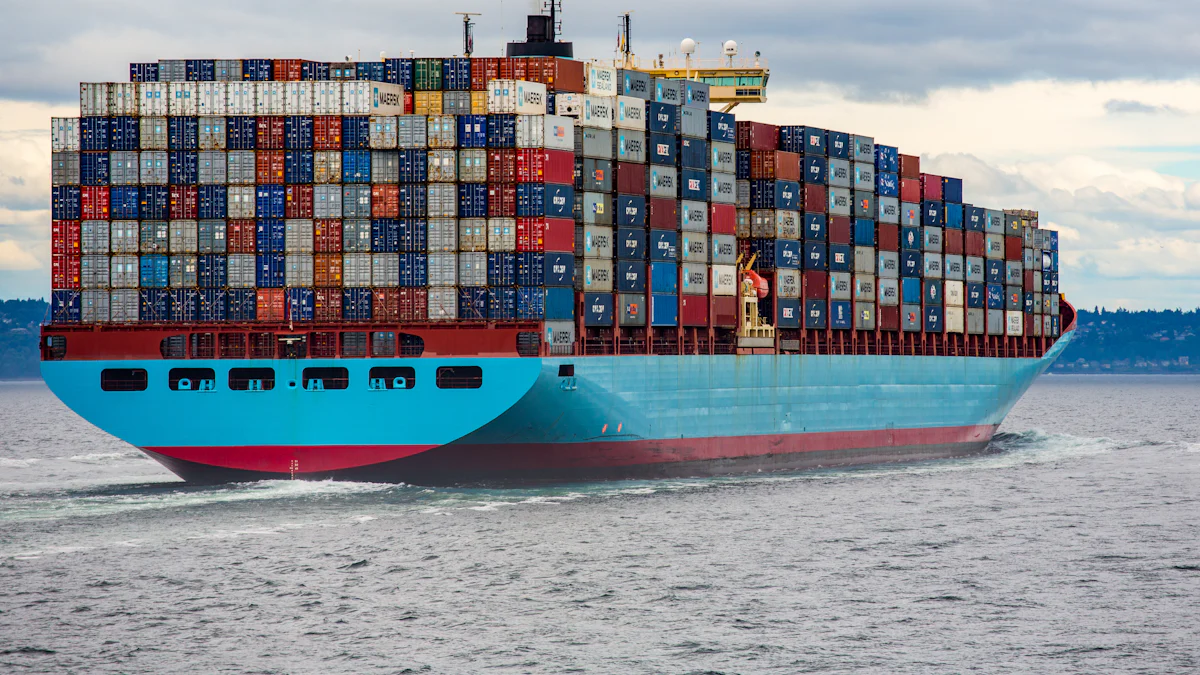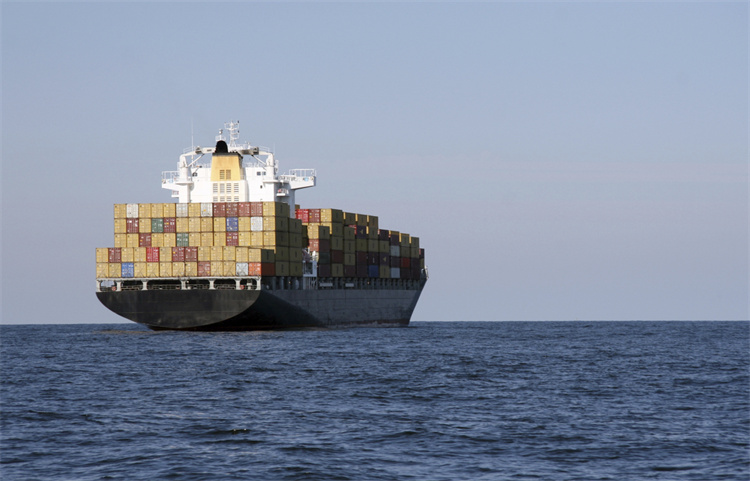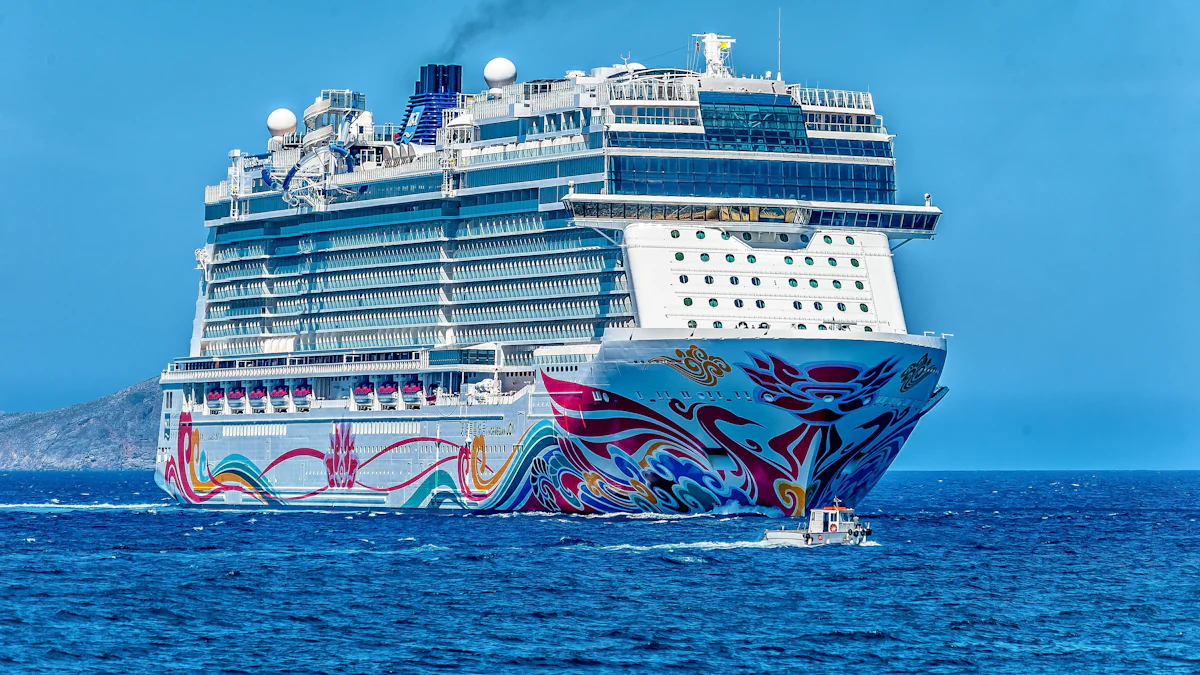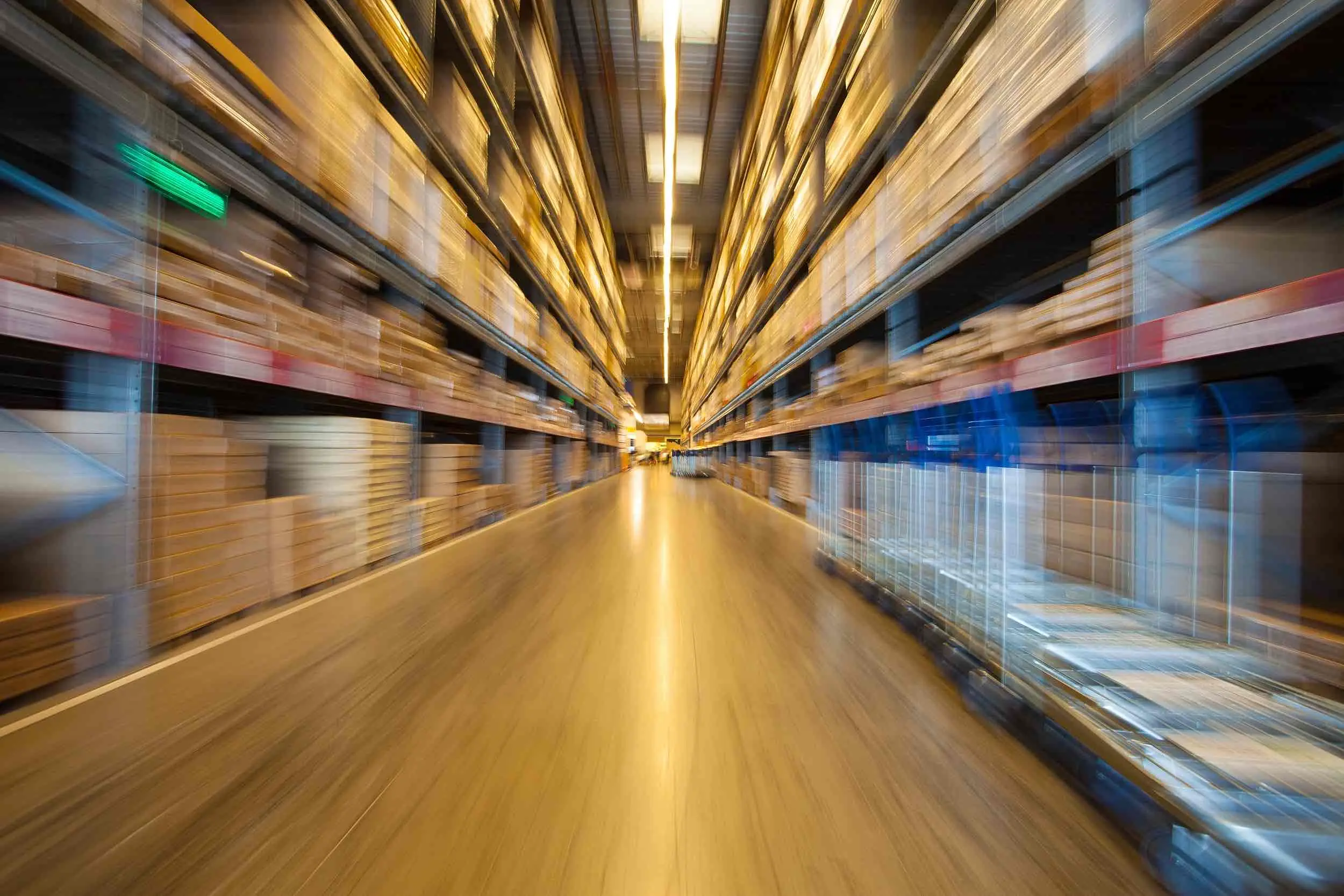Navigating Trends in Cruise Ships and Ocean Shipping

You might not realize it, but cruise ships and ocean shipping are lifelines for global tourism and trade. In 2022, the cruise industry alone generated $137.6 billion, supporting 1.2 million jobs. After covid-19 disrupted operations, companies embraced greener technologies like LNG-fueled ships. This shift ensures a sustainable future for these vital industries.
Key Takeaways
The cruise industry is innovating with new ships featuring unique amenities, catering to diverse passenger interests, from luxury to adventure.
Sustainability is a priority, with cruise operators adopting cleaner fuels like LNG and advanced waste management systems to reduce environmental impact.
Technology is enhancing passenger experiences on cruises, with mobile apps and AI systems making activities planning and communication seamless.
Emerging Trends in the Cruise Ship Industry

New Ship Launches and Advanced Features
The cruise ship industry is buzzing with excitement as new ships set sail, each offering unique features. You’ll find ships like the SH Diana, a Polar Class 6 vessel with cozy accommodations for 192 guests, complete with 24/7 in-room dining and a heated pool. If you’re looking for something larger, the Vista is Oceania’s first new ship in a decade, designed for Mediterranean voyages. For thrill-seekers, the Norwegian Viva boasts a go-kart racetrack and a luxurious ship-within-a-ship complex. Expedition enthusiasts will love the Ocean Albatros, another Polar Class 6 ship with wellness areas and observation decks. These launches highlight how the cruise ship industry continues to innovate, offering something for everyone.
Sustainable Innovations in Cruise Ship Operations
Sustainability is now a top priority for cruise operators. Many ships are switching to liquefied natural gas (LNG), a cleaner fuel option that reduces emissions. Some are even exploring battery power storage and advanced fuel cell technology. You’ll also notice efforts like high-tech electrical shore power systems, which cut emissions while docked. Waste management has seen a revolution too, with advanced systems turning sewage into reusable water and food waste bio-digesters reducing landfill contributions. These innovations show how the cruise ship industry is tackling environmental challenges head-on.
Enhancing Passenger Experiences with Technology
Cruise technology is transforming how you experience life at sea. High-speed internet keeps you connected, whether you’re streaming your favorite shows or sharing vacation photos. Mobile apps now let you plan activities, get real-time updates, and even unlock your cabin door. AI-powered systems like chatbots provide instant assistance, while facial recognition speeds up check-ins. Some ships even use virtual reality for entertainment. These advancements ensure your cruise is as seamless and enjoyable as possible.
Environmental Challenges in Ocean Shipping
Tackling Carbon Emissions in Maritime Transport
You might not know this, but ocean shipping contributes about 2.9% of global carbon dioxide emissions. That’s over 1,000 million tonnes of CO2 annually! Without action, these emissions could rise by 130% by 2050. To combat this, the EU has expanded its Emissions Trading System (ETS) to include large ships. This encourages companies to adopt low-carbon solutions. You’ll also see strategies like slow steaming, which reduces fuel consumption by lowering travel speeds. Digital tools for route optimization save time and cut emissions. Some ships are even switching to renewable fuels like biofuels and green hydrogen. These efforts show how the industry is tackling its environmental impact head-on.
Innovative Monitoring Technologies for Environmental Impact
Technology is transforming how shipping companies monitor their environmental impact. AI-enabled sensors now track air and water quality in real time. These sensors detect pollution sources and help crews act quickly. Predictive analytics can even forecast potential violations or natural disasters, giving you a safer and more efficient shipping experience. By using these tools, companies ensure compliance with regulations while reducing greenhouse gas emissions. It’s a win-win for the environment and the industry.
Regulatory Changes and Their Implications for Ocean Shipping
Recent regulations, like the Ocean Shipping Reform Act (OSRA), are shaking things up. OSRA focuses on transparency and fairness in maritime shipping. It enforces stricter rules on carrier fees and detention practices. For you, this means more efficient and reliable shipping services. Companies are also adapting by using digital solutions and collaborating regionally to meet these new standards. These changes aim to make ocean shipping safer, greener, and more efficient.
Advancements in Sustainability Across Maritime Industries

Green Technologies in Cruise Ships and Cargo Vessels
You’ve probably noticed how the maritime industry is embracing green technologies to reduce its environmental footprint. Cruise ships and cargo vessels are now adopting alternative fuels like bio-LNG, bio-methanol, and bio-ethanol. Some ships even feature engines designed for zero-carbon fuels like ammonia or hydrogen. Leading cruise lines, including Carnival and Royal Caribbean, are setting the bar high. Carnival has equipped over half its fleet to connect to local power grids while docked, cutting emissions significantly. Royal Caribbean and Norwegian Cruise Line Holdings are also introducing ships that can operate on methanol, a cleaner fuel option.
Innovative propulsion systems, like sails and kites, are making waves too. These systems can reduce fuel consumption and carbon emissions by up to 20%. Eco-friendly ship designs, including optimized hull shapes and lightweight materials, further enhance fuel efficiency. These advancements are paving the way for the carbon-neutral ship of the future.
Technology/Practice | Emissions Reduction | Cost Savings |
|---|---|---|
LNG Fuel | Up to 30% reduction | $207,300 |
Sail and Kite Propulsion Systems | Up to 20% reduction | N/A |
Exhaust Gas Purifiers (Scrubbers) | Meets emission standards | N/A |
Sustainable Practices in Fishing and Shipping
Sustainability isn’t just about technology. It’s also about how you operate. In fishing, selective gear like turtle excluder devices and longline circle hooks help minimize bycatch. Certification schemes, such as the Marine Stewardship Council (MSC), reward fisheries that adopt eco-friendly practices. Setting catch limits and protecting marine areas ensure you’re preserving ecosystems for future generations.
Shipping companies are also stepping up. They’re adopting circular economy models and using alternative fuels to cut emissions. Operational strategies like slow steaming and just-in-time arrival optimize fuel use. These practices align with global sustainability goals, helping the industry contribute to a greener planet.
Collaboration Between Governments, Industry, and JUSDA
You might wonder how collaboration plays a role in sustainability. Governments and the maritime industry are working together to share knowledge and develop cleaner technologies. Public-private partnerships and research consortia are driving innovation. For example, technology transfer initiatives focus on creating cleaner vessels and alternative fuels.
JUSDA is at the forefront of these efforts. By integrating sustainable practices into its operations, JUSDA helps clients meet environmental goals while improving efficiency. Its JusLink platform uses IoT and big data to optimize supply chains, reducing emissions and costs. This collaboration ensures the maritime industry stays on course toward a sustainable future.
Tip: Partnerships between governments and companies don’t just address environmental concerns. They also improve operational efficiency and compliance with regulations, making the industry more resilient.
The Role of JUSDA in Ocean Shipping and Cruise Ship Operations
JUSDA’s Comprehensive Ocean Shipping Solutions
When it comes to global shipping, you need a partner who understands the complexities of ocean freight. That’s where JUSDA steps in. With its extensive network and expertise, JUSDA offers solutions tailored to your needs. Whether you’re managing cruise ship logistics or transporting goods across continents, JUSDA ensures smooth operations. Its services cover everything from route optimization to real-time tracking, giving you peace of mind. By focusing on efficiency and reliability, JUSDA helps you navigate the challenges of modern shipping while keeping costs in check.
Leveraging JusTrade for Efficient Customs Clearance
Customs clearance can feel like a maze, but JusTrade simplifies it for you. This smart platform integrates advanced technologies like AI and big data to streamline the process. Whether you’re handling cruise ship logistics or managing cargo for cruise lines, JusTrade ensures compliance with regulations. Its real-time tracking and seamless communication keep you informed every step of the way. With JusTrade, you can focus on delivering exceptional experiences for your guests and crew while leaving the paperwork to the experts.
Enhancing Supply Chain Efficiency with JusLink Technology
JusLink takes supply chain management to the next level. This intelligent platform uses IoT and cloud computing to optimize cruise ship operations. It connects every part of your supply chain, from procurement to delivery, ensuring efficiency. For cruise lines, this means better coordination between crew and suppliers. Guests benefit too, as smoother operations lead to enhanced experiences. JusLink’s data-driven approach helps you reduce waste, cut costs, and stay ahead in a competitive economy.
Note: JUSDA’s innovative solutions make cruise ship logistics and operations more efficient, helping you focus on what matters most—your guests and crew.

JUSDA Solutions
To provide you with professional solutions and quotations.
The cruise industry and ocean shipping sectors are evolving rapidly to balance growth with sustainability. Challenges like high costs, limited renewable fuels, and infrastructure gaps persist. The covid-19 pandemic accelerated innovation, pushing companies to adopt greener technologies. JUSDA and JusTrade lead the way with efficient, eco-friendly solutions. Collaboration and advanced technologies will shape a sustainable future.
See Also
Understanding Logistics Risk Trends and Their Effects
Discovering Innovations in Sea Freight Logistics for 2024
Get Prepared: New Transport Technologies for Supply Chains
Enhancing Supply Chain Efficiency: Five Key Trends Ahead
Exploring Breakthroughs in Logistics Technology for Tomorrow
